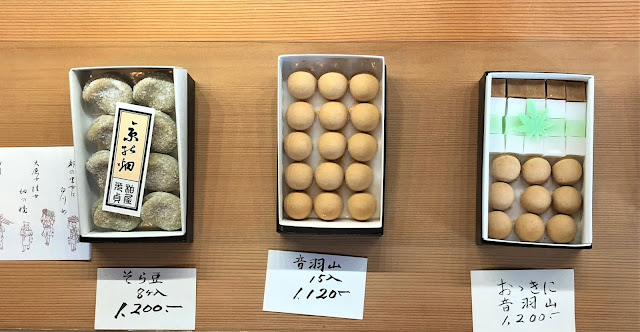We were invited to visit the Gion District of Kyoto because a friend, Baba Yuko, also known as Japan's Queen of Kimonos. She collects so many rare, expensive and beautiful Kimonos opened an antique Kimono rental company in the Gion central area. Yuko and her son, Takashi, a young photographer offered to give us a tour of the Gion District and the culture in this area. He agreed to take many of the photos as we toured the traditional culture of Kyoto.
On our list of things to see and do included: touring Zen Temples/Shrines and their tranquil Zen gardens, Kyoto's historical architecture, meeting Geisha and Maiko (apprentice Geisha), learning more about kimonos and of course enjoy the fine local and traditional food that this area has to offer.
We stayed at a new 5 star hotel in Kyoto known as The Celestine Kyoto Gion. What a beautiful, serene hotel and so close to many of the tourist spots on our list. The service is wonderful, great relax in a modern, Japanese atmosphere large public bath & Japanese garden and so very convenient since they offer free shuttle service daily to the Kyoto train station.
The Celestine Kyoto Gion Hotel website: https://www.celestinehotels.jp/kyoto-gion/eng/
One of our friends owns a nice coffee shop and restaurant called "SAGAN" and it is so very near our hotel with delicious food that we enjoyed a delightful breakfast each morning.
 |
| One morning breakfast at Sagan |
Kennin-ji Temple: This Very old temple was founded in 1202 and is reported to be the oldest Zen temple in Kyoto. Kenninji is one of the main branches of Japanese Buddhism. Buddhism, founded approximately 2,500 years ago in India by Shakyamuni Buddha, teaches that the inherent suffering of life can be transcended through equanimity, wisdom, and compassion.
Kennin-ji Temple, website: http://www.kenninji.jp/english/
The Yasaka Dori, Higashiyama Dori area in Higashiyama District is set along the lower slopes of Kyoto's
eastern mountains. We loved this area and is one of the city's best preserved historic
districts. It's a great place to experience traditional old Kyoto,
especially between the famous Kiyomizudera and Yasaka Shrines. Here, there are narrow walkway lanes, traditional wooden buildings and old style merchant shops
that invoke a feeling of Kyoto in times long past.
The famous Tower of Yasaka is located at an important temple district called Higashiyama. Hokan-ji is between the Yasaka and Kiyomizu temples. This structure is commonly called the Tower of Yasaka. It’s a 46 meter high, 5 story pagoda with a tiled roof on each story. The Tower of Yasaka was founded in the 6th century Asuka Period and has been rebuilt many times after a fire and other historical events. The current Yasaka building was built in 1440 by Ashikaga Yoshinori. It has been designated as a very important cultural property in Japan.
As we walked this area we admired the narrow stone cobbled alleys and had a very nostalgic feeling. There are many old and newer Japanese style shops at both ends. As we walked, we could gaze at the 5-story Yasaka pagoda. As tourists we loved the view. At the end, we turned around and went back to Kiyomizu temple and the shop to buy some souvenirs and sweet candies as we continued our leisurely stroll down Ninenzaka Street.
Minatoya Yurei Kosodate Ame Honpo: "A candy the ghost bought for children – Mysterious and popular candy for people wishing for promotion". Our photograher friend, Takashi bought us to this interesting candy emporium as a souvenir of Gion.
Visiting Kyoto's traditional Kyomachiya Building: In the 1950's era, Kyoto merchants built their town house shops with a store in the front and their living quarters (wooden house) behind the shop's sliding doors.
These private house/shops were very popular boom of the Showa 40's and 50's. We were told there was no such word in the Edo period so this was strictly a mid-20th century style.
Kyoto Ebisu Shrine was built in 1202, when Kennin-ji Temple was founded across the street. Although it was built as the guardian deity of Kennin-ji Temple, it became popular by itself among the people in town as the local deity making their wishes come true – wishes include not just success in commerce, but prosperous fortunes of family, travel safety, etc.
Ebisu-Jinja Shrine : https://www.discoverkyoto.com/places-go/kyoto-ebisu-shrine/
Kyoto Ebisu Shrine is known as one of the country’s three most popular shrines dedicated to Ebisu, one of the Seven Gods of Fortune. God Ebisu was considered as the patron of both business people and fishermen alike. Images of Ebisu’s festive and jolly figure with his well known fishing pole can be found throughout the grounds. Located just south of the Zen temple Kennin-ji, this Ebisu Shrine is the place to be during the January Tōka Ebisu festival, when business owners from all over Kyoto and other Japan districts gather in the hopes that the shrine’s lucky bamboo will bring good fortune and prosperity to their enterprises.
 |
| Delicious dinner at the famous Gion restaurant "Shinkirou": (Reservation Tel: +81-75-541-0706) |
 |
Yaska-Jinja Shrine is a temple with more than 1000 years of history. According to the legend of the shrine, its history may go back as far as 150 years before the Heian Period, 656 AD (the second year of the reign of Emperor Seimei).
Many locals in the area and tourists around the world visit this shrine during the Gion Matsuri summer festival, which is why locals affectionately call it Gion-san.


























































No comments:
Post a Comment